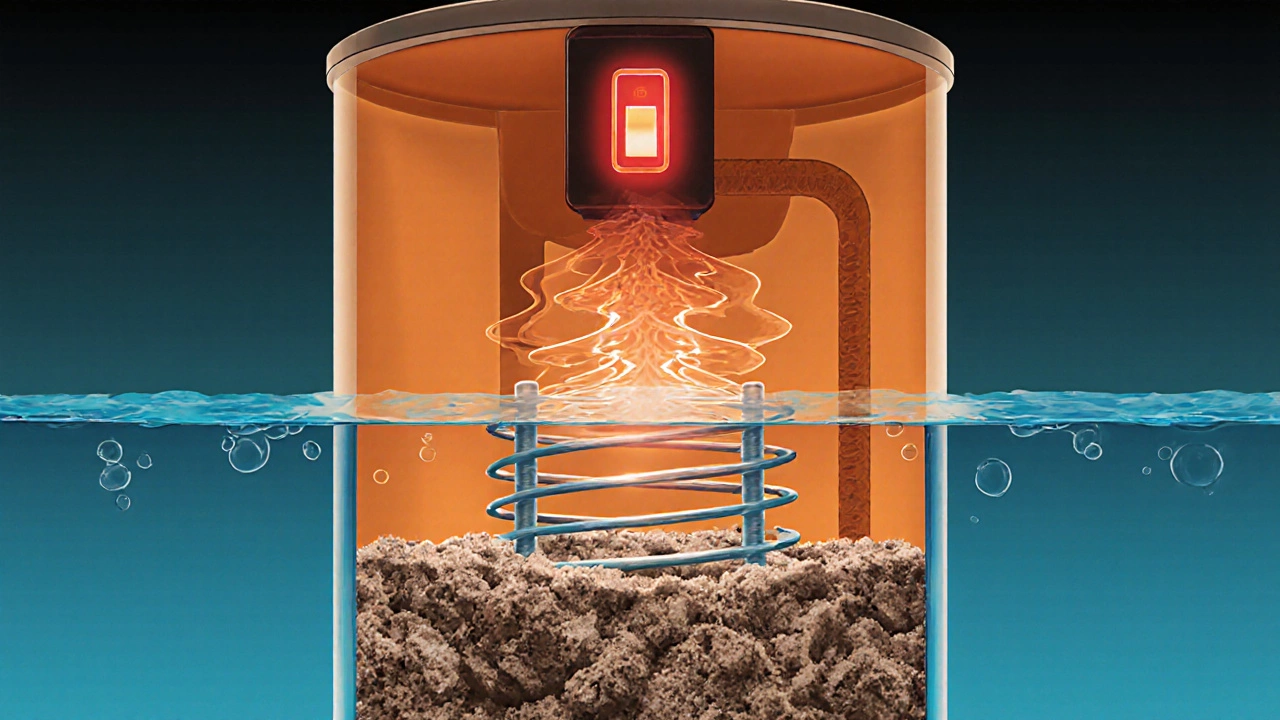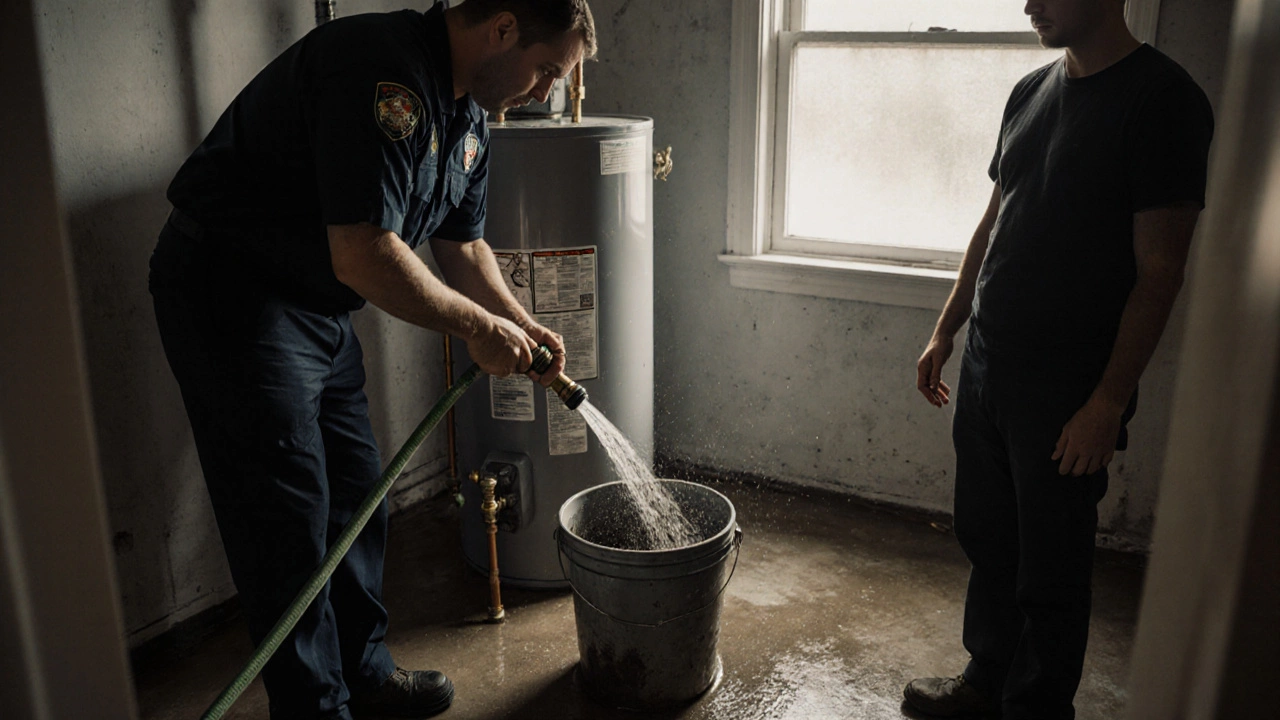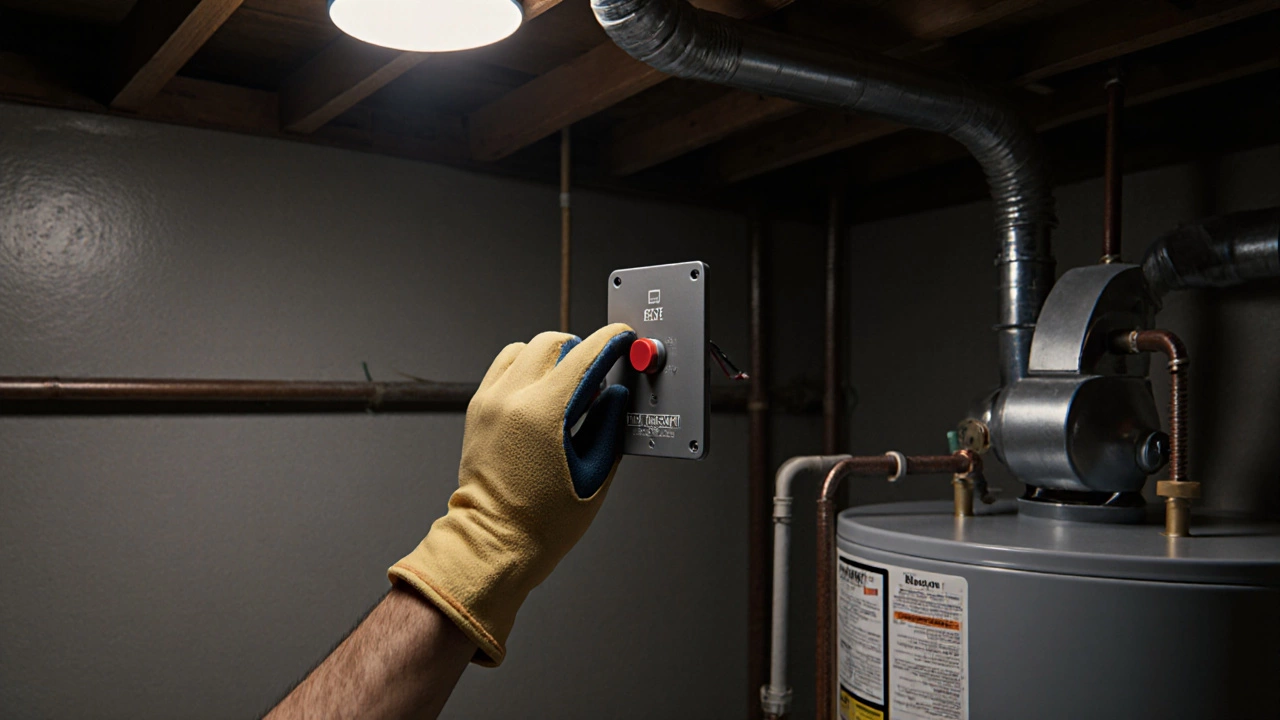If your hot water suddenly went cold and you’re not sure why, chances are your water heater shut itself off. Most electric water heaters have a safety feature called a reset button - a small red button on the thermostat - that trips when something goes wrong. Resetting it is often the quickest fix. But it’s not always that simple. If the button pops again right after you press it, something deeper is wrong. This guide walks you through exactly how to reset your hot water heater safely, what to check before and after, and when to call a pro.
First, turn off the power
Before you even look for the reset button, safety comes first. Electric water heaters run on 240 volts - that’s enough to kill. Even if the water’s cold, the tank might still be energized. Go to your main electrical panel and flip the breaker labeled "Water Heater" or "HW" to the OFF position. If you’re not sure which one it is, turn off the main breaker to be safe. This isn’t optional. Skipping this step risks serious injury.
For gas water heaters, turn the gas valve to the "Off" position. It’s usually a small handle near the bottom of the unit. Turn it perpendicular to the gas line to shut it off. Don’t worry about the pilot light - you’ll relight it later if needed.
Locate the reset button
On electric models, the reset button is hidden behind a metal access panel on the side of the tank. You’ll need a screwdriver to remove it. Behind that panel, you’ll see two thermostats - one for the upper heating element, one for the lower. The reset button is a small, red button, usually right between them or on top of the upper thermostat. It’s often labeled "Reset" or just has a tiny red dot.
Gas water heaters don’t have a reset button. If your gas heater isn’t working, the issue is likely the thermocouple, pilot light, or gas control valve - not a reset switch.
Press and hold the reset button
Once you’ve found it, press the button firmly. You should feel a slight click. Don’t just tap it - hold it down for 5 to 10 seconds. This gives the system time to clear any internal fault. Then release it.
Now, turn the power back on at the breaker. Wait 30 to 45 minutes for the water to heat up. Test the hot water at a faucet nearby. If hot water returns, you’re done. If not, keep reading.
Why did the reset button trip?
Reset buttons don’t trip for no reason. They’re safety devices. Here are the most common causes:
- Overheating: If the thermostat malfunctions and keeps heating past 180°F, the high-limit switch trips. This can happen if the thermostat is faulty or if sediment buildup traps heat at the bottom of the tank.
- Faulty heating element: A shorted or grounded heating element can cause the reset button to pop. This is common in older units or where water is hard.
- Loose wiring: Corroded or loose connections at the thermostat or element terminals can cause arcing and overheating.
- High water pressure: If your home’s water pressure exceeds 80 psi, it can stress the tank and trigger safety systems.
If the reset button trips again after you’ve turned the power back on, one of these issues is still active. Resetting it a second time won’t fix the root problem - it’ll just delay the inevitable.

Check the heating elements
If the reset button keeps tripping, you need to test the heating elements. You’ll need a multimeter. First, turn off the power again. Drain a few gallons of water from the tank to lower the water level below the elements. Remove the access panels and insulation to expose the element terminals.
Set your multimeter to ohms (Ω). Touch one probe to each terminal on the element. A good element reads between 10 and 30 ohms. If it reads zero (shorted) or infinite (open), the element is dead and needs replacing. Replace both elements at the same time - if one failed, the other is close behind.
Also check for corrosion on the terminals. Clean them with sandpaper if needed. Tighten any loose wires. Reinstall the panels and insulation, then restore power.
Flush the tank to remove sediment
Hard water leaves mineral buildup - mostly calcium and magnesium - at the bottom of your tank. This layer acts like insulation, forcing the heating element to work harder and overheat. It’s the #1 cause of premature element failure.
Every year, drain a few gallons from the tank using the drain valve at the bottom. Attach a garden hose, open the valve, and let it run into a bucket or drain until the water runs clear. If it’s full of grit or looks like muddy tea, you’ve got serious buildup. Flush until it’s clean. This alone can extend your heater’s life by 5+ years.
Check the thermostat settings
Most manufacturers set thermostats to 120°F by default. That’s safe, energy-efficient, and enough for most households. But if someone turned it up to 140°F or higher, you’re asking for trouble. Higher temps increase the risk of scalding and overheating.
Use a screwdriver to adjust both thermostats to 120°F. Don’t set them higher unless you have a very large household or a dishwasher without a booster heater. Keep both thermostats at the same setting. If one is higher than the other, the upper element will cycle too often and wear out faster.
When to replace the water heater
If you’ve reset the button, replaced the elements, flushed the tank, and it still trips - your water heater is likely at the end of its life. Most electric water heaters last 8 to 12 years. If yours is older than 10, replacement is smarter than repair.
Signs it’s time to replace:
- Water is rusty or smells bad
- Leaking from the tank itself (not the fittings)
- Constant reset button trips after repairs
- It takes over an hour to heat water
- High energy bills despite no change in usage
Modern water heaters are 20-30% more efficient than models from 10 years ago. A new 50-gallon unit with a 12-year warranty costs around $800-$1,200 installed. It’ll pay for itself in energy savings within 3-5 years.

What to do if you have a gas water heater
Gas heaters don’t have reset buttons. If your gas water heater isn’t working, check these first:
- Is the pilot light out? If yes, relight it using the instructions on the tank’s label. Follow them exactly - gas leaks are dangerous.
- Is the gas valve turned on? The handle should be parallel to the gas line.
- Is the thermocouple dirty or bent? It’s the thin copper tube next to the pilot flame. Clean it with steel wool or gently bend it so the tip sits directly in the flame.
- Is the gas control valve faulty? If the pilot stays lit but the burner won’t turn on, the valve may be broken. This requires a licensed technician.
Never try to bypass safety controls on gas units. Gas leaks can cause explosions. If you smell gas - even faintly - leave the house immediately and call your gas company.
Prevent future reset issues
Here’s how to keep your water heater running smoothly:
- Flush the tank every 6-12 months
- Set the thermostat to 120°F
- Install a water softener if you have hard water
- Check the pressure relief valve once a year - lift the lever to make sure water flows out
- Replace the anode rod every 3-5 years - it’s the sacrificial metal rod inside the tank that prevents rust
These steps cost you nothing but time - but they can double your heater’s lifespan.
Frequently Asked Questions
Why won’t my water heater reset?
If the reset button won’t stay pressed or trips again immediately, there’s a serious problem - usually a faulty heating element, bad thermostat, or heavy sediment buildup. Resetting it repeatedly won’t fix the issue. You need to test the elements and flush the tank. If the problem continues, the water heater is likely failing and needs replacement.
Can I reset a gas water heater?
No, gas water heaters don’t have a reset button. If your gas heater isn’t working, check the pilot light, gas valve, and thermocouple. If the pilot won’t stay lit or the burner won’t ignite, you likely need a new thermocouple or gas control valve. These repairs should be done by a licensed technician.
How often should I flush my water heater?
Flush your water heater at least once a year. If you have hard water (high mineral content), do it every 6 months. Sediment buildup reduces efficiency, strains the heating elements, and shortens the tank’s life. Flushing is simple, cheap, and prevents most reset button failures.
Is it safe to reset the water heater myself?
Yes, if you follow safety steps: turn off the power (for electric) or gas (for gas models) before touching anything. Never attempt repairs if you’re unsure. If you smell gas, leave the house immediately. If the reset button keeps tripping after you’ve replaced the elements and flushed the tank, call a professional - you’re dealing with a deeper electrical or mechanical failure.
What’s the average lifespan of a water heater?
Most electric and gas water heaters last 8 to 12 years. With regular maintenance - flushing, anode rod replacement, thermostat checks - you can stretch that to 15 years. If your unit is over 10 years old and you’re having frequent reset issues, replacement is usually more cost-effective than repeated repairs.
Next steps
If you’ve reset the heater and hot water returned, congratulations - you fixed it. But don’t stop there. Schedule a tank flush in the next month. Check your thermostat settings. Write down the age of your unit. If it’s older than 8 years, start budgeting for a replacement.
If you tried everything and the reset button still won’t stay in, don’t keep guessing. Call a licensed plumber. A $150 diagnostic call now can save you from a flooded basement later. Water heater failure doesn’t give warnings - it just leaks. And when it does, it’s never convenient.



